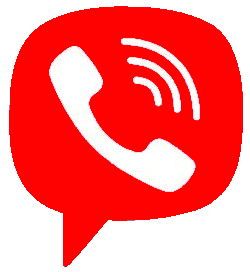Chin surgery involves the augmentation, reduction, or general reshaping of the chin. The two most common methods are: chin augmentation, which reshapes the chin by inserting a silicone implant under the skin, and chin reductions, which involve bone reduction with power bone instruments.
A more serious type of procedure, craniofacial surgery, corrects misshapen jaws caused by misalignment of the teeth and jaws (malocclusion), or mild inadequate tissue development (hypoplasia) which can appear as a recessed upper jaw. Patients with a major chin deficiency require bone surgery (osteotomy) where the bone of the chin is moved forward following various oblique bone incisions, thereby reshaping the chin.
In chin augmentation surgery, implants are used to change the underlying structure, which affects the overall balance of facial features. Often chin implants are used together with other facial implants, particularly cheek implants, however, they can be used alone. This operation is often performed in conjunction with nose surgery as well as a facelift and/or liposuction of the face and neck.
Chin implants are made in various shapes and sizes. They are made out of both solid and semi-solid materials.
What happens during the procedure?
Chin augmentation is usually performed in an outpatient surgical center, either operated by your surgeon or a hospital facility. It takes between 30 and 60 minutes but depending on the extent of the procedure, it can take longer. If you are having more than one procedure, overnight hospitalization may be required.
Chin surgery can be performed under local anesthesia, along with intravenous sedation, or general anesthesia depending on your health, the extent of the procedure and whether you are having other procedures at the same time. Before your surgery, routine laboratory tests may be requested including blood counts and blood chemistries.
A small incision is made, usually inside the lower lip, to create the pocket and then the implant is inserted inside the mouth, along the lower lip, directly over the jawbone or in the skin just under the chin area. The implants are made in a variety shapes and sizes. Incisions inside the mouth (intra-oral incision) are closed with sutures (stitches) that dissolve. Removable sutures are used for incisions under the chin and are taken out after five to seven days. To minimize swelling and discomfort, the chin is usually taped for about a week.
Are there risks or potential side effects?
If the surgery involves an incision inside your mouth, it is important that you inform your physician if you smoke or if you have any dental or gum problems.
As with all surgeries, there is always a possibility of complications following chin surgery, including infection, bleeding, a reaction to the anesthesia, hematoma, seroma, extrusion (the implant works its way back up to the skin’s surface), capsular contracture (excess tightening of the scar tissue) which may distort the implant, asymmetry, nerve damage and bone erosion.
Sometimes, a facial implant can shift slightly out of alignment and a second operation may be necessary to replace it in its proper position.
Should infection occur, your surgeon will prescribe a treatment with antibiotics, however, the implant might have to be temporarily removed if the infection does not clear up and replaced at a later date. Other, less-common risks may be associated with certain implants. Be sure to ask your surgeon about all of the risks associated with the procedure you are considering before you make any decision.
What to expect post-procedure?
The extent of the post-operative swelling and bruising is dependent on whether you tend to bruise or swell easily. The amount you can expect varies for each individual but past surgeries or injuries should be a good indication. Keep your head elevated, above the level of your heart, when lying down. Applying cold compresses, or small ice packs will reduce swelling and relieve discomfort. Many patients use a water-tight plastic sandwich bag filled with an ounce of frozen berries or peas. Regular icing is the key to relieving the swelling. There is pain and discomfort for several days after surgery and your doctor will prescribe medication to alleviate it.
Some difficulty talking and smiling for several days following the surgery is normal. Patients with intra-oral sutures are sometimes placed on a liquid diet for several days until there is enough healing for food particles to come in contact with the stitches. Your surgeon will instruct you about dental hygiene, eating and any restrictions to your activities after surgery and it is important that you follow all of his or her instructions to minimize risks and help speed-up your recovery.
How soon does normal life resume?
Within the first week, you can be back at work. Although you should avoid strenuous activities, exercise can be resumed in about two weeks. Be careful to avoid contact sports or any activity that may result in the face being jarred or bumped for several weeks. Check with your surgeon about resuming such activities. Although most of the significant swelling will subside over a period of several days, prolonged mild swelling may prevent your final facial contour from becoming apparent for several months.
Who performs it?
Chin augmentation and reduction surgery is usually performed by a plastic surgeon or an otolaryngologist (ENT), while craniofacial surgery is best performed by maxillofacial surgeons and otolaryngologists.
Are you a good candidate?
As with all elective surgery, good health and realistic expectations are prerequisites, but if you want to change your profile or are having nose surgery, a facelift or facial liposuction, then chin surgery may be appropriate, but:
- Make sure that you are free of known allergies to the implant material.
- Make sure you are not prone to scarring problems such as keloids.
- Tell your surgeon about any and all medical conditions and any allergies you may have and whether you are a smoker or have dental or gum problems. Also, tell your surgeon about any medications, herbal supplements or natural supplements you are taking (both prescription and non-prescription).
How to prepare for surgery?
Your doctor will give you specific instructions to prepare for surgery but here are some general guidelines:
- Avoid aspirin, any aspirin containing medication or any other non-steroidal anti-inflammatories (NSAID), such as Motrin® or Advil®, for two weeks prior to treatment. Because aspirin thins the blood, it can interfere with normal blood clotting and increase the risk of bleeding and bruising.
- Smoking inhibits the healing process, so stop smoking before your procedure and if you start again, make sure it is after you are completely healed.
- Avoid drinking alcohol a few days before your surgery.
- Make sure to follow any fasting instructions the night before and morning of your surgery. Your doctor may insist on an empty stomach depending on the type of anesthesia.
- Make sure that you arrange for someone to bring you home and to help you out for 24 hours after surgery.
Are there alternatives to this procedure?
An alternative to chin augmentation is submental liposuction, in which excess fatty tissue is removed to redefine the chin or neckline. Orthodontistry can treat a malocclusion and misaligned teeth, which are often at the root of a protruding or recessed jaw.




